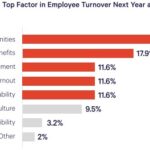The California Air Resources Board (CARB) has launched the Driving Clean Assistance Program (DCAP), a $242 million initiative designed to help low-income Californians transition to zero-emission vehicles. This program aims to ensure that all Californians, regardless of income, can benefit from clean transportation options as the state progresses towards its ambitious carbon neutrality and clean air goals.
Understanding the Driving Clean Assistance Program (DCAP)
California is a leader in zero-emission vehicle adoption, with nearly 2 million ZEVs already sold and clean cars representing a quarter of all new car sales. DCAP is a crucial step to broaden this access, particularly for communities that have been historically underserved. The program prioritizes low-income residents and those in areas lacking existing clean vehicle assistance programs, including tribal and rural communities. Imperial County is set to be the first region to implement DCAP.
Financial Support and Incentives
DCAP offers substantial financial assistance to eligible participants. By scrapping an older, more polluting vehicle, residents can receive up to $12,000 in grant money. This grant is specifically for purchasing or leasing a new or used zero-emission vehicle. Furthermore, the program provides an additional $2,000 to help with electric vehicle charging costs. This assistance can be applied to the purchase of zero-emission cars, electric motorcycles, or e-bikes. To further ease the financial burden, DCAP also facilitates access to low-interest loans through partnerships with various credit unions.
Who Qualifies for DCAP?
Eligibility for DCAP is primarily based on income level. Applicants must have a household income at or below 300% of the federal poverty level. Recognizing that not everyone has a vehicle to scrap, DCAP also offers a purchase assistance option of $7,500 for eligible participants who either do not have an older vehicle or prefer to use it for other mobility solutions like carsharing. This inclusive approach ensures that a wider range of low-income Californians can benefit from the program.
Expanding Access Beyond Existing Programs
DCAP is designed to complement and expand the reach of existing clean vehicle incentive programs in California, such as Clean Cars 4 All (CC4A). While CC4A has been successful in specific air districts, DCAP targets areas currently outside the scope of these programs. Since its inception in 2015, CC4A has distributed over $165 million, enabling 20,000 Californians to acquire cleaner vehicles and remove older, more polluting ones from the roads. The vehicles replaced through CC4A were typically around 25 years old with poor fuel economy, while the replacement vehicles significantly improved fuel efficiency, averaging around 80 mpg equivalent. Despite rising loan interest rates, participation in CC4A has continued to increase in the five air districts where it’s administered: San Joaquin Valley, South Coast, Bay Area, Sacramento, and San Diego. DCAP will extend this type of support to additional counties starting through early 2025.
The Broader Impact of Clean Vehicle Incentives
Beyond the immediate financial benefits, programs like DCAP are crucial for reducing transportation costs for families, particularly by lowering expenses on gasoline and vehicle maintenance. The transportation sector is the largest contributor to air pollution and greenhouse gas emissions in California, disproportionately affecting disadvantaged communities. DCAP is one of several key initiatives aimed at facilitating the transition to clean vehicles. These incentives are vital in supporting California’s ambitious air quality and climate goals, including Governor Newsom’s executive order mandating that all new car and passenger truck sales be zero-emission by 2035. Furthermore, state clean vehicle incentives can often be combined with federal programs, maximizing the financial benefits for participants.
For more detailed information about the Driving Clean Assistance Program, you can visit the official CARB website.
